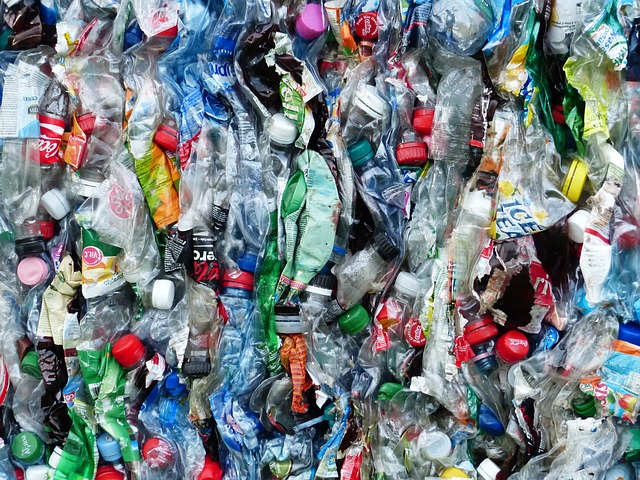Welcome to the second addition in the series of ‘What happens to our…’ This time were going to be talking about the mixed recycling. Mixed recycling production in the 2018/2019 academic year totalled 322.048 tonnes which is the weight of 1 baby blue whale and was 24% of the total waste created in that year.
Our mixed recycling is produced all around campus, we have mixed recycling sections in all of our public litter bins around campus, mixed recycling bins within all of our buildings, teaching rooms, offices and residential areas. Mixed recycling consists of paper, card, magazines, tins, cans, foil, all types of plastics, plastic/paper packaging, sweet wrappers, crisp wrappers and juice cartons to name a few go into this part of the bin. Therefore most of the waste created on campus can go into the bin! And what we say is that if you are not sure place the item into the mixed recycling anyway as the waste gets sorted at the dirty Materials Recycling Facility (MRF). Remember in our last post we stated how 85% of the waste in the general waste was actually mixed recycling? This shows how much more mixed recycling should be going into those green sacks. Mixed recycling goes into the green sacks within the bins which are then removed (cleaning team within teaching and office areas, and students in residential areas) and placed into the mixed recycling euro bins within the bin compounds. I have linked our maps section on our website which shows the public litter bins and external bin compounds for Canterbury and Medway. All bins have signage on which shows that it is a mixed recycling bin and the lids are green just like the green sacks. The recycling doesn’t have to be completely washed out, but use common sense and don’t place half a can of baked beans within the green sack.
So once the bags are all in the external euro bins, our waste contractor Viridor come and collect them. Each external euro bin has a barcode style chip attached which allows the waste vehicle to connect the waste weight of the bin to the location, which is then used to provide the waste weight for every external euro bin on campus. This is essential for Estates to be able to determine areas where the mixed recycling has increased or decreased and so can provide us with target areas that we can work on.
Once the bins have been emptied, the vehicle goes to a transfer site, here the mixed recycling is removed from the vehicle and added into a larger transportation truck to then transport the waste to the Materials Recovery Facility (MRF). So once the waste is placed into the larger transportation truck it is mixed in with waste from other organisations.
Our mixed recycling is taken to Crayford Materials Recycling Facility (MRF) where it goes through a conveyor belt system which separates items by magnets, air and vibration first of all and then is hand sorted. All items are cleaned and then are bailed in their material types to then be sold within the industry to create new products from these recycled materials. Here is the link to a video of a Viridor MRF facility where mixed recycling is processed at. I also think that this video is also a really good way of explaining the process that the mixed recycling goes through.
In our University of Kent Waste Strategy 2018-2021 our target is to increase the reuse rather than the recycling, as we are aiming to work in line with the waste hierarchy of prevention, prepare for reuse, recycling, other recovery and lastly disposal. To find out more look out for our Waste Hierarchy blog post.
Join us next month to find out what happens to our….glass
If you have any questions or want to find out more please reach out through our Instagram, twitter or email and there is also lots of information including the A-Z of waste on our webpages.
